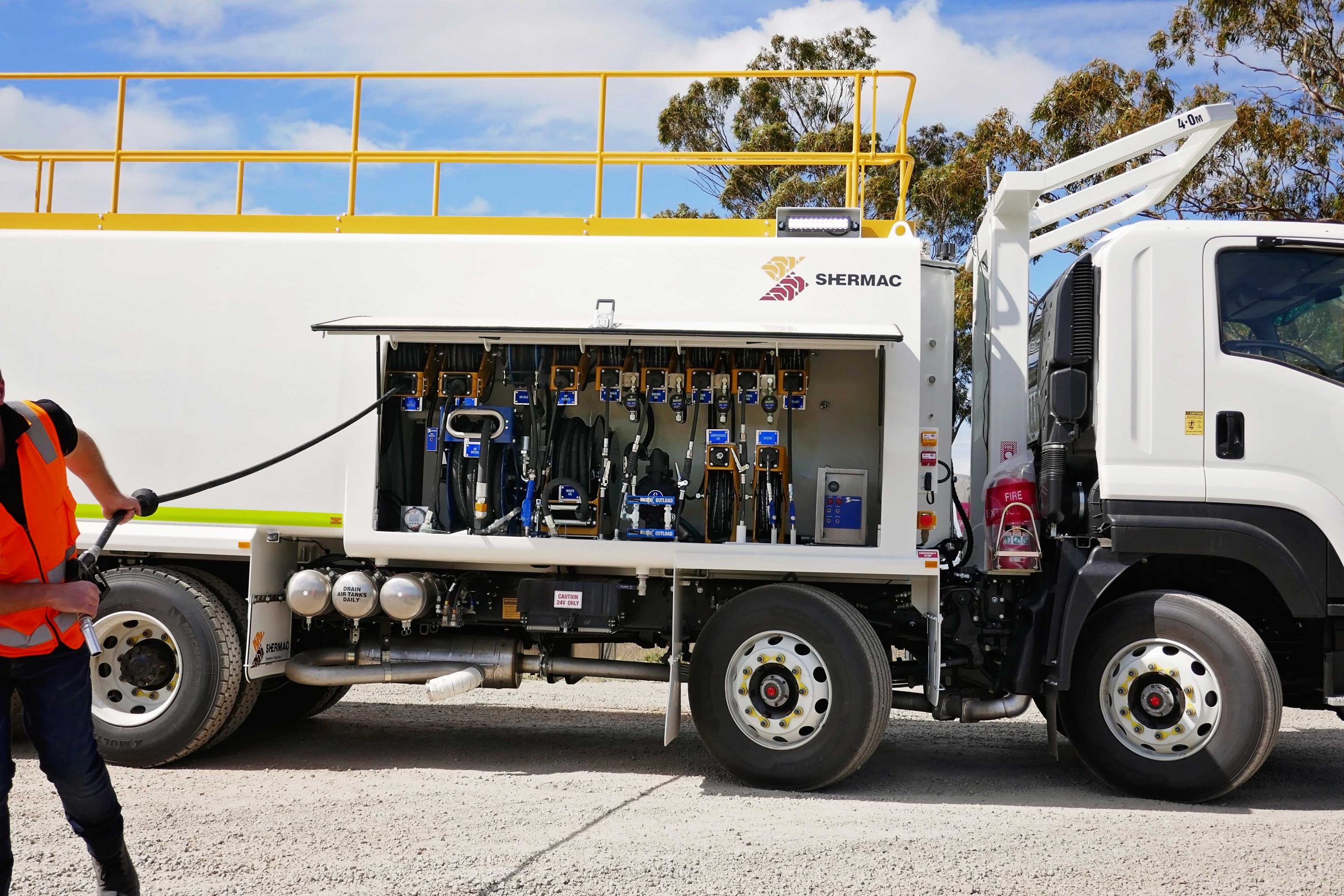
An operator of a service vehicle will visit a number of different locations during the course of a shift and will perform a range of repetitive service tasks. The most common task is refueling, and the link between the service vehicle and the equipment to be refueled is the fuel hose, and an operator might be required to access the hose reel up to 50 times per day.
Because refueling volumes are large, they need high capacity delivery systems and fuel hoses are often heavy and large hoses that may be 15 metres or more in length. The challenge of handling heavy hoses increases when working in hilly terrain or on soft surfaces that are common on mines sites.
The constant need to roll-out and rewind the hose reels present a potential ergonomic risk to the operator of repetitive strain injury. The process is further exacerbated by the need to keep the discharge nozzle clean to prevent contaminants entering the fuel tank.
To minimise the risk of repetitive strain injuries, Shermac actively optimises operator ergonomics on all its vehicles.
While many service vehicles have hose reel access higher than shoulder height, Shermac position the hose reel as low as possible,at an ergonomic height for handling and reducing the risk of shoulder injuries.
Lightweight hoses might have a spring rewind system, but this is not suitable for fuel hoses as the spring tension required to rewind a long, heavy hose increases the effort required for an operator to pull out.
The typical Shermac fuel hose has a manual roll-out and hydraulic or pneumatic assisted rewind. On roll-out, the hose clutch is disengaged and the reel free-wheels for easy delivery, and the powered rewind does all the rewind work.
Once refuelling is finished, the operator has to walk back to the service vehicle holding the nozzle-end of the hose off the ground to prevent it getting dirty and leaving a loop of hose on the ground. Once at the vehicle, the operator activates the rewind switch and manages the rewind while all the time keeping the nozzle off the ground and clean.
While this is an ergonomic solution, there is a better option available from Shermac. Once refueling is finished, the operator can activate the rewind via a remote rewind switch on a wrist-band and simply walks the hose reel back to the service vehicle.
Continuous improvement is part of Shermac DNA, and future fuel delivery developments potentially include the use of fuel booms with short flexible hose lengths to further improve operator ergonomics and optimise productivity.
These examples illustrate Shermac’s commitment to engineering safety in and hazards out and to maximise operator well being, vehicle up-time and productivity with predictable lifetime cost.
Talk to our well-trained and knowledgeable team to find out more about our customisation process and how we can help you.
Call our team on 1300 799 943 or email [email protected] with your inquiry.